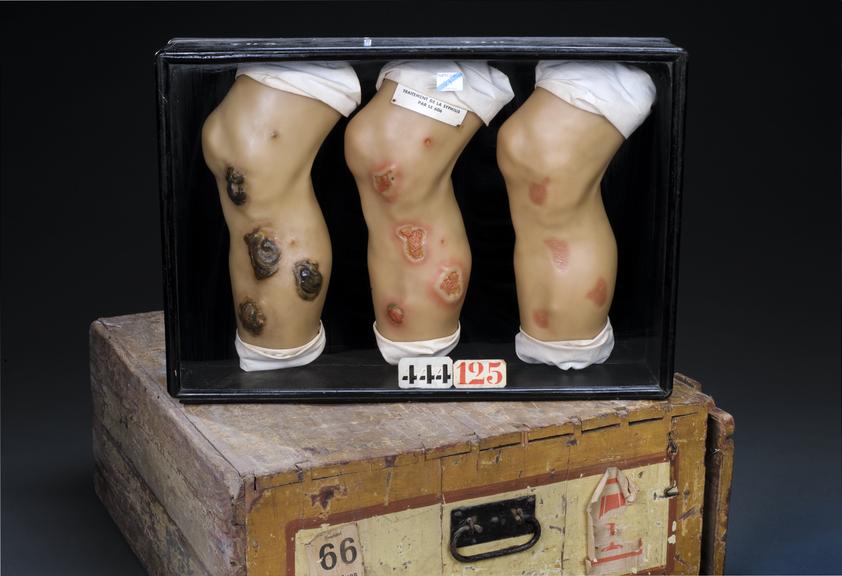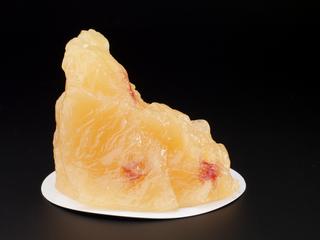Three wax legs showing treatment of ulcers caused by syphilis, Germany, 1910-1920
Three life size wax leg segments showing stages in the successful treatment of ulcers caused by secondary stage syphilis with Salvarsan, preparation 606, mounted glass display case, probably made in Germany, 1910-1920
More
Would these gruesome wax models showing the effects of syphilis make you think twice about having sex? That was their intention when they were made in the 1910s, and collected by painter Leonce Schiffmann for a touring anatomy exhibition in the 1920s. Doctors and public health officials claimed that the spread of this sexually transmitted infection would only be halted when the public knew about its consequences and means of prevention.
Education campaigns tended to exploit society’s disgust of this unsightly infection. What is your reaction to the sores and ulcers seen here on the mouth and legs? Historians have argued that this approach did not solve the problem, but added to the fear of the disease, and the stigma and discrimination towards its sufferers.
‘Before and after’ waxes also aimed to show the value of prompt treatment with ‘magic bullet’ Salvarsan, the 606th arsenic compound tested by Paul Ehrlich and his team. Look for the models with a white label – they indicate treatment with (preparation) 606. The injections were painful though, and a long course was often needed.
Former carnival ‘freak’ show owners Lily Binda and William Bonardo inherited the collection a few decades later. The waxes took on yet another role – to cause sensation. The life-size models, some with genuine human hair, were toured around European fairgrounds. But whether exhibited for education or leisure, their convincing depiction of syphilis has certainly made them a talking point.
- Measurements:
-
overall: 455 mm x 650 mm x 140 mm,
- Materials:
- wood , glass , paper (fibre product) and wax
- Object Number:
- 2023-95/1
- type:
- anatomical model






